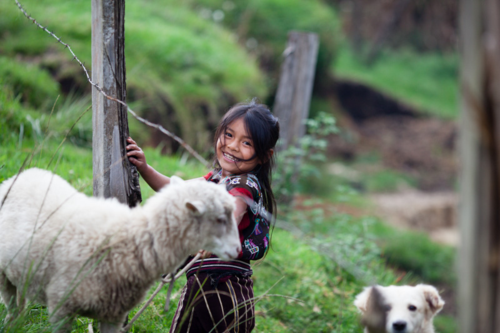Although the escalating numbers of child migrants have created a new humanitarian challenge on the southern border, the causes of this surge are familiar. They appear to be an intensified version of the traditional drivers and dynamics of migration from Central America:
Push factors. Poverty and violence are widespread in Guatemala, Honduras, and El Salvador (the Northern Triangle region), where child migration has previously surged in recent years.
Pull factors. People are often driven by economic opportunity, safe haven, and the hope for potential legalization in the United States.
Transnational immigrant networks. The family, community, and economic links that connect Central Americans with the diaspora in the United States and other nations compel people to make the journey.
Some analysts have also cited family disintegration and domestic violence as contributing causes, while others argue that the child migration surge is linked to a new tactic of drug trafficking organizations. Others attribute the entire surge to violence, or to Central Americans' misunderstanding of their potential for earning amnesty in the United States. In fact, the surge is caused by varying combinations of all these and other factors.
As is typical of discussions about immigration in the United States, most of the focus is on people who have already arrived. The Obama administration is mobilizing resources, both at the border and in the U.S. interior, to respond to the flood of new arrivals, and rightly so. But stricter border enforcement and better care for recently arrived child migrants won't make the issue go away. It's not enough. It's a stopgap.
Five or 10 years down the line, what will we do to help prevent parents from sending their children on the dangerous journey north? So far, we don't have an answer.
When our elected officials do turn their attention from the border and migrants already here to the external causes of immigration, they generally focus on assistance for police and military. Last month the president announced he would set aside $161.5 million for the ongoing Central American Regional Security Initiative (CARSI), which helps the governments and security forces of several nations in the region deal with the weakness of "the rule of law" and escalating crime rates.
Given that these nations have some of the highest levels of violence in the world, this makes sense, but giving more money to the region's security agencies is not a panacea. In fact, since 2008 Congress has appropriated $803.6 million for CARSI, yet a recent Congressional Research Service (CRS) report states, "Most country-level security indicators have yet to show significant improvements."
That doesn't mean the United States should stop assisting the region's security forces to better protect their citizens. It does mean recognizing that this is an incomplete solution and the underlying economic conditions that drive the violence and unauthorized migration also need attention. As the CRS report points out, "Persistent poverty, inequality, and unemployment leave large portions of the population susceptible to crime. Given the limited opportunities other than emigration available to the expanding youth populations in Central America, young people are particularly vulnerable."
Although the Department of Homeland Security (DHS) is charged with U.S. immigration enforcement, it recognizes the importance of economic conditions in the Northern Triangle to the influx of child migrants. As a May 2014 analysis states, "Guatemalan children come from rural areas, indicating they are probably seeking economic opportunities in the U.S."
While escaping violence may be the primary motivation for most migrants, the DHS internal report says that the weakness of the region's economies plays a key role as well: "This violence, combined with poor economies and other secondary factors will make stemming the flow...a very complex issue to address."
It's an unsexy solution unlikely to yield quick success, but any long-term resolution of child migration needs to include economic development programs targeted particularly to migrant-sending regions. Agencies such as the United States Agency for International Development (USAID) and the Millennium Challenge Corporation--which already fund economic development programs in Central America but typically don't engage migration issues--should work with Northern Triangle nations and the U.S. diaspora to identify and put in place a strategy to address the poverty and lack of opportunity that drive youth to leave.
One way to begin to integrate U.S. migration policy and development policy is to measure the impact of U.S. foreign assistance on young people's propensity to migrate. The Inter-American Foundation has piloted these types of programs, but they are small. In spite of the central role of poverty and lack of economic opportunity in generating unauthorized immigration, U.S. economic development strategy does not integrate migration, even in migrant-sending regions.
The border patrol isn't the only deterrent to unauthorized migration. Generating economic incentives for young people to stay in their home communities can help the United States avoid confronting increasing waves of child migrants year after year.
